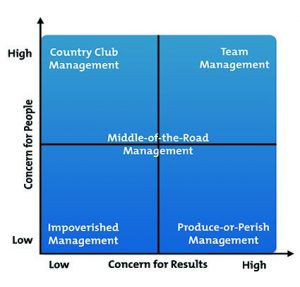We’ve heard this expression time and again. And many of us live it daily as administrations come and go. “Change is the only constant.”
So, in order to be effective, leaders today must have both style and substance. These traits will help leaders navigate the turbulent waters of government’s ebbs and flows. No longer is technical expertise, GS, or SES status enough to succeed as a leader in public service. As you may have surmised from the 2017 All Employee Survey Results, employees examine every move of a leader, and often react accordingly. Therefore, it is essential that today’s leader is both competent and trusted. Government leaders must be able to solve organizational challenges while meeting the demands of human relations.
To illustrate, I’d like to share with you my personal experience with a rare angel among us. What follows is a look at a leader who – day in and day out – epitomizes the balance of style and substance; a leader who excels in technical expertise, but who rises to the occasion because of how she treats members of her team.
Like many of you, I have experienced the bad bosses and marvelous mentors who have made an impact on my view of work. But my experience with this one manager was unique. This leader was most effective as she performed an intricate dance grounded in solid skills and nurturing style. I’ll call her “Angel.”
Angel led a multi-disciplinary group of diverse experts who had to work cooperatively to advance very technical applications throughout a government enterprise. She was not an IT professional or a medical expert, but had to lead with conviction, knowledge and purpose, leading a virtual team of disparate employees located across the nation. I worked with Angel for seven years. Throughout that tenure, she gracefully conquered highly complex problems with hands-on guidance, expert knowledge of the systems and a trusting, encouraging human touch. She balanced technical know-how with a personal touch, equally aligning concern for people and concern for results.
I allude to Angel’s skillset as an intricate dance because her technical and conceptual skills were seamlessly combined with essential style attributes including mutual respect for her employees and colleagues, concern for both production and people and organizational commitment. She practiced team management, was forward-thinking and remained resilient in spite of organizational changes. She gracefully demonstrated more than knowledge or technical expertise and was valued by others for her attention to the human relation aspect of the job.
To become even better, Angel realized that people were watching. Her personal sentiments, while appreciated by most, were sometimes misconstrued by some, especially in various other regions or cultures. However, Angel was a great listener, and for that she achieved great power in her division.
She was aware that since style is perceived differently by others and in various situations and cultures, this approach may be seen as a “country-club management” by those who see her only as agreeable and not task focused. But Angel did strive for a high people, high-results approach found in a team-based approach, which experts say is ideal in leading people with passion and getting results.
So how can you find your niche? Can you, too, be that “angel” among your team? Experts have these tips to share with you:

Blake Mouton Diagram
Step 1: Take a quiz to find your natural style.
Step 2: Identify your strengths and areas of improvement. Then chart them.
Step 3: Put the Blake Mouton Managerial Grid in context and strive for a mix of people and production.
To learn more about leadership styles, go to this online resource .
Stacie Rivera is part of the GovLoop Featured Blogger program, where we feature blog posts by government voices from all across the country (and world!). To see more Featured Blogger posts, click here.





Leave a Reply
You must be logged in to post a comment.